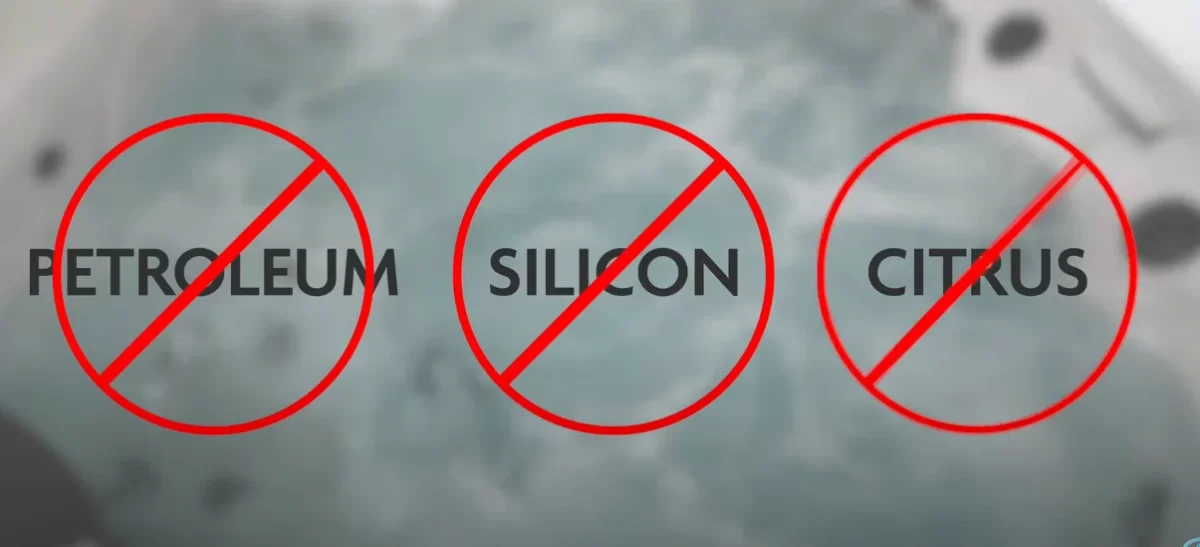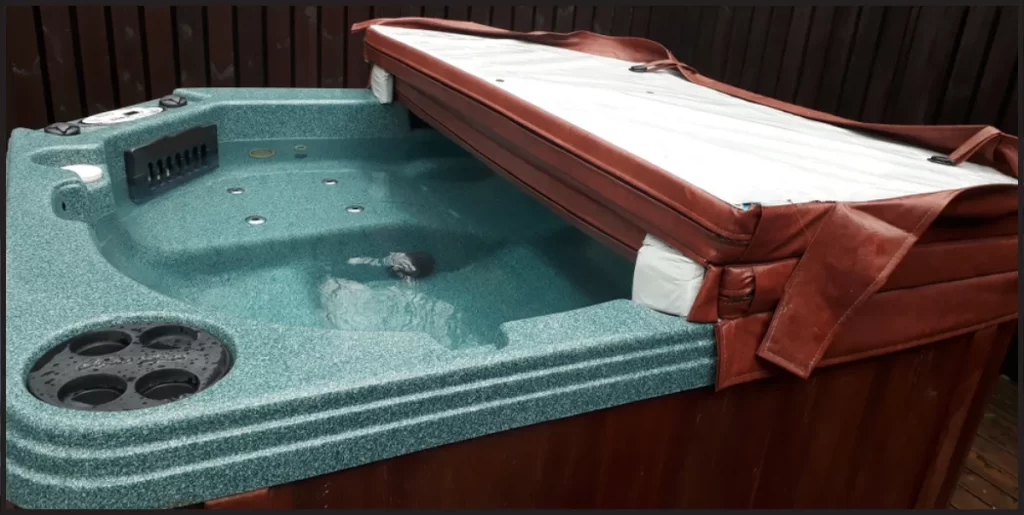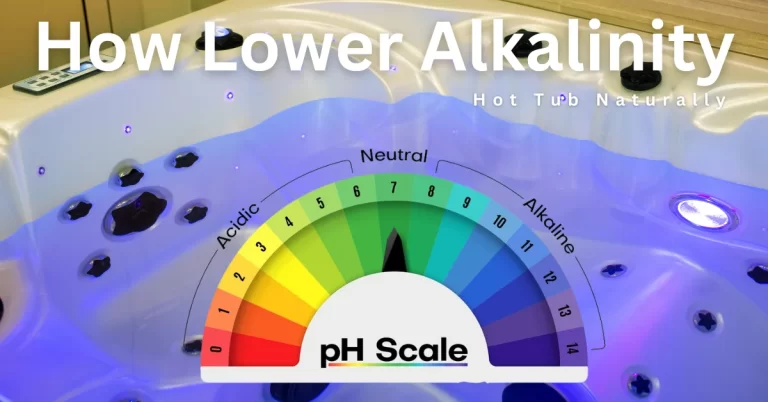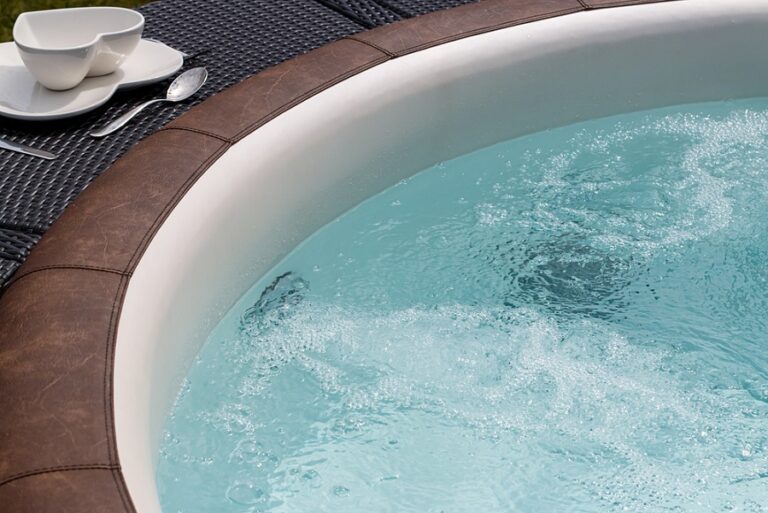Choosing the Best Hot Tub Vinyl Cover: Fit, Quality, and Care
Finding the right hot tub vinyl cover can be a hassle, especially when juggling concerns about fit, durability, and keeping your energy bills in check. Whether you’re dealing with a cover that’s seen better days or want to ensure your investment lasts, you’re not alone.
When I was choosing a hot tub vinyl cover, I quickly realized how important it is to find one that fits just right, lasts long, and can handle tough weather.
Like many, I worried about whether it would keep my energy bills down and how much maintenance it would need. If you’re in the same boat, this guide is for you.
I’ll share what I learned to help you pick the best hot tub vinyl cover that checks all the boxes, so you can protect your hot tub and your wallet.

Understanding the Importance of a Good Hot Tub Vinyl Cover
Choosing the correct shape is essential for achieving a secure and effective seal, which is key to maximizing the cover’s benefits.
A. Protection and Insulation
- Energy Efficiency: A well-fitting vinyl cover is crucial for maintaining your hot tub’s temperature, reducing heat loss, and ultimately lowering your energy bills.
- Weather Protection: A good cover shields your hot tub from the elements, including debris, rain, snow, and harmful UV rays, which can damage the tub and increase maintenance costs.
- Safety: A sturdy cover also acts as a safety feature, keeping children and pets out of the hot tub when it’s not in use.
B. Fit and Shape Considerations
- Custom Fit: The right fit ensures that the cover sits snugly on your hot tub, preventing heat escape and keeping out unwanted dirt and debris.
- Variety of Shapes: Hot tub covers come in various shapes to match different tub designs, including:
- Square Corners
- Rounded Corners
- Circle
- Four Equal Cut Corners
- One Cut Corner A/B
- Two Cut Corners A/B
- Eight Sided Polygon
- Three Cut Corners
- Covers with Raised Speakers
You may also like our Guide to Hot Tub Umbrellas: Get Shade and Privacy.
Key Features to Look for in a Hot Tub Vinyl Cover
Choosing the right hot tub vinyl cover involves more than just finding one that fits. You’ll want to consider several key features to ensure your cover provides the protection and longevity you need.
A. Durability and Quality
- Material Matters: The quality of the vinyl and the construction of the cover are crucial. Look for covers made from heavy-duty vinyl that can withstand daily wear and tear, as well as extreme weather conditions.
- Exterior Skin: A durable exterior skin is essential for protecting the cover from UV rays, harsh weather, and general wear. If your current cover is looking worn, consider replacing the exterior skin to extend its life.
- Color Options: Thermal Guardian Spa Covers offer 15 different color options, allowing you to choose one that complements your outdoor space. Options include:
- Almond
- Brown
- Golden Tan
- Rust
- Walnut
- Parchment
- Hunter Green
- Teal
- Navy Blue
- Light Blue
- Black
- Charcoal
- Ash Grey
- Slate Grey
- Maroon
B. Weather Resistance
- All-Weather Protection: Your hot tub cover needs to be resilient against various weather conditions. Whether it’s snow, rain, or intense sun, a good cover should offer strong resistance to prevent cracking, fading, or other weather-related damage.
- Insulation Properties: Look for covers that provide excellent insulation, as this not only keeps your hot tub warm but also reduces energy consumption. Covers with thicker insulation cores are better at retaining heat, making them more efficient in colder climates.
The Pros and Cons of Different Hot Tub Cover Materials
Choosing the right material depends on your priorities, whether it’s insulation, durability, or ease of maintenance. Assess your needs and preferences to find the cover that best suits your hot tub and outdoor environment.
1. Vinyl Covers
Pros:
- Durability: High-quality vinyl covers are resistant to water and UV damage, making them durable and long-lasting.
- Ease of Cleaning: Vinyl covers are relatively easy to clean with mild soaps and DIY cleaners.
- Insulation: They provide good insulation, helping to retain heat and reduce energy costs.
- Variety: Available in many colors and styles, allowing you to choose one that matches your outdoor décor.
Cons:
- Prone to Cracking: Over time, vinyl can become brittle and crack, especially with prolonged exposure to the sun.
- Maintenance Required: Regular conditioning is needed to prevent fading and deterioration.
- Weight: Vinyl covers can be heavy, which might make them cumbersome to handle.
2. Foam Covers
Pros:
- Excellent Insulation: Foam covers provide superior insulation, significantly reducing heat loss and energy consumption.
- Lightweight: They are generally lighter than vinyl covers, making them easier to handle.
- Durable: High-density foam covers are sturdy and can withstand various weather conditions.
Cons:
- Water Absorption: If not properly sealed, foam can absorb water, leading to increased weight and reduced insulation efficiency.
- Cost: Foam covers are typically more expensive than vinyl options.
- Limited Colors: Foam covers usually come in fewer color options compared to vinyl covers.
3. Thermal Covers
Pros:
- High Energy Efficiency: Thermal covers are designed to provide excellent insulation and are often used in conjunction with other cover types to maximize heat retention.
- Lightweight: These covers are generally lighter and easier to manage.
- Custom Fit: They can often be custom-made to fit specific hot tub shapes and sizes.
Cons:
- Durability: Thermal covers may not be as durable as vinyl or foam, especially under harsh weather conditions.
- Maintenance: They can require regular maintenance to keep them in good condition and prevent wear.
4. Hard Covers
Pros:
- Robust Protection: Hardcovers are very durable and provide excellent protection against debris and harsh weather conditions.
- Security: They offer enhanced safety features, making it difficult for children or pets to access the hot tub when it’s not in use.
- Long-Lasting: Typically made from sturdy materials like fiberglass or heavy-duty plastic, hard covers have a long lifespan.
Cons:
- Cost: Hardcovers tend to be more expensive due to their robust construction.
- Weight and Handling: They can be quite heavy, making them harder to lift and move.
- Limited Insulation: They may not offer the same level of insulation as foam or thermal covers.
Maintenance Tips to Extend the Life of Your Vinyl Cover
A well-maintained hot tub vinyl cover can last for years, providing effective protection and insulation. Regular care is key to ensuring its longevity and keeping it looking and performing its best.
A. Cleaning Instructions
- Regular Cleaning: Dirt, debris, and moisture can accumulate on your cover, leading to mold and mildew growth. Clean your cover every few weeks using a mild cleaner or a DIY cleaner made from gentle household ingredients. Avoid harsh chemicals, as they can degrade the vinyl.
- Step-by-Step Cleaning Process:
- Remove the cover and place it on a clean, flat surface.
- Rinse off any loose debris with a garden hose.
- Apply the cleaner evenly across the surface using a soft brush or sponge.
- Scrub gently to remove any dirt or stains, paying extra attention to seams and creases.
- Rinse thoroughly and let the cover dry completely before placing it back in the hot tub.

B. Conditioning Instructions
- Protectant Application: To prevent the vinyl from cracking, fading, or becoming brittle, apply a vinyl conditioner or protectant at least once a month. This adds a layer of UV protection and helps the material retain its flexibility.
- Application Tips:
- After cleaning and drying the cover, apply the conditioner evenly with a clean cloth.
- Work the product into the vinyl using circular motions, ensuring full coverage.
- Allow the conditioner to soak in for a few minutes, then wipe off any excess with a dry cloth.
C. Repairing and Restoring Your Cover
- Minor Repairs: If your cover has small tears or holes, a vinyl repair kit can fix these issues before they worsen. Patch kits are easy to use and can extend the life of your cover.
- Restoring the Exterior Skin: Over time, the exterior skin of your cover may show signs of aging. If cleaning and conditioning no longer restore its appearance, consider replacing the exterior skin to maintain the cover’s protective qualities.

How to Choose the Right One
- Consider Your Climate:
- If you live in a colder climate, a thermal cover may be the best option to retain heat and save energy. However, a standard cover may suffice if you live in milder weather.
- Think About Your Budget:
- The price of a hot tub cover varies depending on the type and size. Determine your budget before shopping to ensure you get the best value for your money.
- Measure Your Hot Tub:
- Measure your hot tub accurately to ensure you get the right size cover. A cover that’s too small will not provide adequate protection, and one that’s too big will be difficult to maneuver.
- Read Reviews:
- Before purchasing, read reviews from other hot tub owners to get an idea of the quality and durability of different brands and models.
When to Consider Replacement or Repair
By weighing the extent of the damage and considering the cost of repairs versus replacement, you can decide the best course of action to keep your hot tub well-protected.
A. Signs It’s Time for a Replacement
- Significant Wear and Tear: If your cover has large cracks, rips, or areas where the vinyl is peeling away, it may be beyond simple repair. These issues can lead to water absorption, making the cover heavy and less effective at insulation.
- Waterlogged Cover: A cover that has absorbed water and becomes heavy is no longer providing adequate insulation. This not only affects energy efficiency but also makes the cover difficult to handle.
- Sagging or Warping: Over time, a cover can lose its shape, leading to sagging in the middle or warping around the edges. This compromises the cover’s seal, allowing heat to escape and debris to enter.
B. Repairing Your Existing Cover
- Minor Repairs: If the damage is minimal, such as small tears or worn seams, a repair kit can help extend the life of your cover. These kits typically include patches and adhesives designed specifically for vinyl.
- Replacing Exterior Skin: If the cover’s structure is still sound but the vinyl skin is showing signs of age, consider replacing just the exterior skin. This can restore the cover’s appearance and protect it from further damage.
- DIY vs. Professional Repair: For those who are handy, DIY repairs can be a cost-effective solution. However, if the damage is extensive or you’re unsure of your abilities, it might be worth investing in professional repair services to ensure the job is done right.
A hot tub cover is a barrier between the water and outside elements. It keeps leaves, dirt, and other debris out of your tub, so you don’t have to spend time cleaning it.
Benefits of Vinyl Covers
There are many benefits to owning a vinyl cover, including the following:
- Protection:
- It protects your hot tub from debris, leaves, and insects entering the water and clogging the filtration system. This can help you save money on maintenance costs in the long run.
- Energy Savings:
- A vinyl cover can help reduce your energy bills by retaining the heat of your hot tub. This means you won’t have to use as much energy to keep your hot tub at the desired temperature.
- Safety:
- It can help prevent children and pets from accidentally falling into the water, which can be dangerous and potentially life-threatening.

Further Reading: Solar Panel Hot Tub Cover: The Future of Relaxation
Types of Hot Tub Covers
When it comes to hot tub covers, there are several types to choose from, each with pros and cons. Here are the most common types:
- Standard Covers:
- Standard covers are the most basic type. They’re typically made of foam with a vinyl outer layer and come in various thicknesses. Standard covers are suitable for most climates and provide essential protection for your hot tub.
- Thermal Covers:
- Thermal covers are designed for cold climates and provide superior insulation. They typically have a thicker foam core and an additional insulation layer to keep heat and cold air out.
- Automatic Covers:
- Automatic covers are the most convenient option. They use a motorized system to retract and extend the cover, making it easy to open and close your hot tub with the push of a button.
- Safety Covers:
- Safety covers are similar to standard ones but designed to withstand more weight. They’re ideal for families with children or pets as they can support considerable weight.
Explore our wide selection of high-quality vinyl covers and maintenance products at Hot Tub Patio, and ensure your hot tub stays protected and ready for relaxation.
For additional information, visit Hot Tub Patio, or if you’re interested in more reading, see Hot tub accessories.
Can you replace the vinyl on a hot tub cover? You can return the vinyl. This is a cost-effective option to rejuvenate your cover’s appearance and functionality.
What is the best material to cover a hot tub? Vinyl is a popular and durable material for hot tub covers due to its insulating properties and resistance to water and UV rays.
Are hot tub covers made of vinyl? Yes, many hot tub covers are made of vinyl due to its durability and suitability for the job.
How do you waterproof a vinyl hot tub cover? Vinyl hot tub covers are inherently waterproof. To maintain this quality, keep the cover clean and apply a vinyl conditioner periodically.
How to Clean and Protect Your Hot Tub Cover? To clean, use a mild detergent and a soft brush. Protect it by storing it correctly, applying UV protection, and using vinyl conditioner.
How to Repair a Hot Tub or Spa Cover Using HH-66? You can repair a hot tub cover using HH-66 adhesive for a reliable bond, especially when replacing the vinyl.









